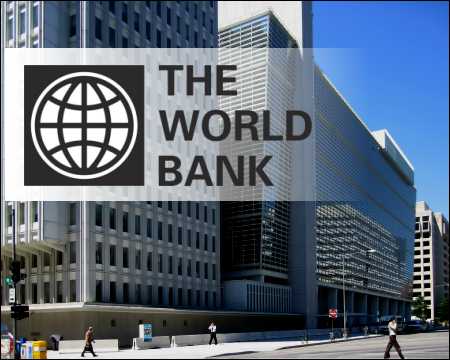The World Bank on Wednesday reported that the impact of unsafe food costs low- and middle-income economies about US$ 110 billion in lost productivity and medical expenses annually.
A new study by the multilateral financial institution titled ‘The Safe Food Imperative: Accelerating Progress in Low- and Middle-Income Countries’ found that a large proportion of these costs could be avoided by adopting preventative measures that improve how food is handled from farm to fork
The study’s findings indicated also that better managing the safety of food would also significantly contribute to achieving multiple Sustainable Development Goals, especially those relating to poverty, hunger, and well-being.
Citing the World Health Organisation’s (WHO’s) data which showed that food-borne diseases caused an estimated 600 million illnesses and 420,000 premature deaths in 2010, the World Bank study indicated that this global burden of food-borne disease was unequally distributed.
According to the study, relative to their population, low- and middle-income countries in South Asia, Southeast Asia, and sub-Saharan Africa bear a proportionately high burden, accounting for 41 percent of the global population yet 53 percent of all food-borne illness and 75 percent of related deaths.
The study’s findings reflected further that unsafe food constituted great threats to young children the most, although children under five years make up only 9 percent of the world’s population, they account for almost 40 percent of food-borne disease and 30 percent of related deaths.
The Breton Woods institution states further that the study translates these grim statistics into economic terms to focus government attention on the need for greater investment, better regulatory frameworks, and measures that promote behaviour change.
According to the bank, the total productivity loss associated with food-borne disease in low- and middle-income countries is estimated to cost US$ 95.2 billion per year, and the annual cost of treating food-borne illnesses is estimated at US$ 15 billion.
It listed other costs, which it described as though harder to quantify, to include losses of farm and company sales, foregone trade income, the health repercussions of consumer avoidance of perishable yet nutrient-rich foods, and the environmental burden of food waste.
Commenting on the study’s findings, Senior Director of the Food and Agriculture Global Practice at the World Bank, Juergen Voegele, said: “Food safety receives relatively little policy attention and is under-resourced. Action is normally reactive—to major food-borne disease outbreaks or trade interruptions—rather than preventative.
“By focusing on domestic food safety more deliberately, countries can strengthen the competitiveness of their farmers and food industry and develop their human capital. After all, safe food is essential to fuel a healthy, educated, and resilient workforce”, Voegele added.
The study finds that for many low- and middle-income countries, rapid demographic and dietary changes among others are contributing to wider exposure of populations to food-borne hazards, stretching if not overwhelming prevailing capacity to manage food safety risks.
The Safe Food Imperative: Accelerating Progress in Low- and Middle-Income Countries schematically describes the alignment, or lack of alignment, between food safety risks and the capacity to manage them as countries develop economically and food systems and diets transform.
The study finds that the gap is the most pronounced “in the middle of the pack,” that is, among lower-middle income countries, and it offers targeted recommendations to address these.
On how the low and middle income countries could address the devastating impacts of food-borne diseases on their people, the Lead Agriculture Economist at the World Bank and study co-author, Steven Jaffee, said: “Governments in low- and middle-income countries not only need to invest more in food safety but also invest more smartly.
“This means investing in foundational knowledge, human resources, and infrastructure; realizing synergies among investments in food safety, human health, and environmental protection; and using public investment to leverage private investment”, he added.
The study also supports a shift in approaches to food safety regulation. The traditional approach centres on enforcing regulatory compliance through product testing and food facility inspections, and the application of legal and financial penalties for infractions.
The study recommended that greater emphasis was needed on providing information and other resources to motivate and empower food sector operators to comply with food safety regulation.
Jaffee said that the results of regulation should be measured in terms of compliant enterprises, confident consumers, and food safety outcomes rather than the number of fines or business closures.
The study was supported by the US Food and Drug Administration. It is a collaborative effort involving multiple researchers and practitioners and draws on data and insights from the CGIAR Research Program on Agriculture for Nutrition and Health, the Food and Agriculture Organization of the United Nations, the World Bank, the World Health Organization, the World Organisation for Animal Health (OIE), and other partners.




